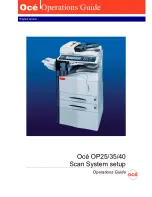
Publication 1747-UM013B-EN-P - January 2005
1-4
Overview
The scanner image contains the image of each adapter on the RIO
link. The adapter is assigned a portion of the scanner image, which is
referred to as the adapter image.
How the Scanner Scans
Remote I/O
The scanner communicates with each logical device in a sequential
fashion. First, the scanner initiates communication with a device by
sending output data to the device. The device then responds by
sending its input data back to the scanner, as illustrated below. You
refer to this exchange as a discrete I/O transfer. After the scanner
completes its discrete I/O transfer with the last configured network
device, it begins another discrete I/O transfer with the first device.
It is important to understand that the scanner transfers RIO data on a
logical device basis not on an adapter basis. A logical device is a full
logical rack or portion of a logical rack assigned to an adapter.
SLC and Scanner Asynchronous Operation
The SLC processor scan and RIO scanner scan are independent
(asynchronous) of each other. The SLC processor reads the scanner
input image file during its input scan and writes the output image file
to the scanner during its output scan. The RIO scanner continues
reading inputs and writing outputs to the scanner I/O image file,
independent of the SLC processor scan cycle.
Depending on your SLC processor, RIO link configuration, and
application program size, the scanner may complete multiple scans
before the SLC processor reads the scanner’s input image file. The RIO
scanner updates its I/O files on a per logical rack basis.
RIO Scanner Scan
Scanner Output
Image File
The scanner updates its
input image file each time
it scans a logical device.
Output
Device 3
Output
Device 2
Output
Device 1
Input
Device 3
Input
Device 2
Input
Device 1
Scanner
Input
Image File
Artisan Technology Group - Quality Instrumentation ... Guaranteed | (888) 88-SOURCE | www.artisantg.com














































